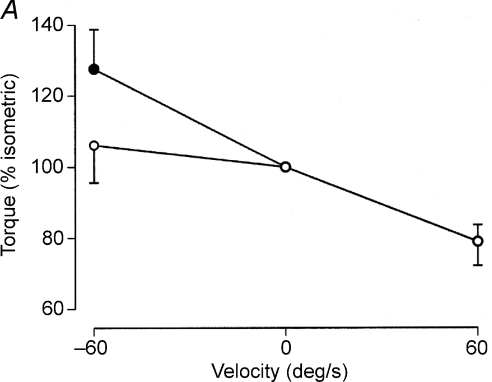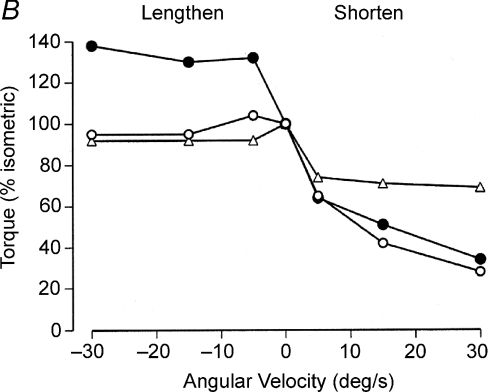Figure 6. Examples of the depression in muscle activation during lengthening contractions.
A, as subjects performed maximal isometric and anisometric contractions with the knee extensors, three electric stimuli (200 μs pulses at 300 Hz; 162 ± 26 mA) were applied to the femoral nerve and the evoked torque was measured. When normalized to the torque produced during maximal isometric contractions, the voluntary (○) and evoked (•) torques were similar during maximal shortening contractions (60 deg s−1) but the evoked torque was significantly greater than the voluntary torque during the maximal lengthening contraction. The difference in the two torques during the lengthening contractions suggests that the voluntary activation was less than adequate. Data from Beltman et al. (2004) used with permission. B, the torque produced during maximal (Δ) and submaximal (○) lengthening contractions with the plantarflexor muscles (mainly soleus) was similar to the torque achieved during isometric contractions. In contrast, electrical stimulation of the muscles to produce an isometric torque of 30% MVC force resulted in a significant increase in torque when a torque motor lengthened the activated muscles (•) at three slow velocities. Thus, the greater relative torque during the evoked contractions suggests that the level of activation was depressed during the voluntary lengthening contractions. Data from Pinniger et al. (2000) reproduced with kind permission from Springer Science+Business Media: European Journal of Applied Physiology, Tension regulation during lengthening and shortening actions of the human soleus muscle, vol. 375, 2000, p. 379, Pinniger GJ, Steele JR, Thorstensson A & Cresswell AG, Fig. 4.


